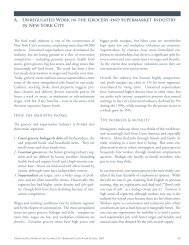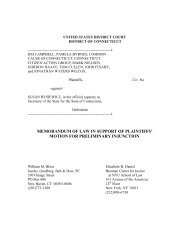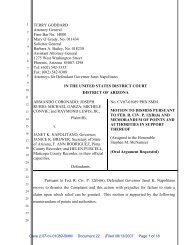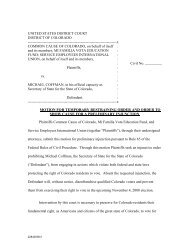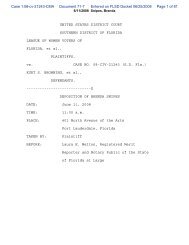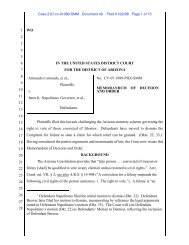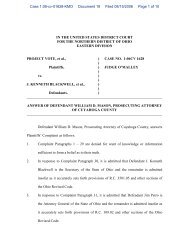You also want an ePaper? Increase the reach of your titles
YUMPU automatically turns print PDFs into web optimized ePapers that Google loves.
Denise Lamb, who currently serves as Chief Deputy Clerk <strong>for</strong> Elections in Sante Fe County, New Mexico,believes that a central database that detailed malfunctions <strong>for</strong> each system, as well as workarounds orsoftware patches supplied by the vendors, could have prevented the problems that Bernalillo Countyencountered with its tally server in 2002, and certainly would have allowed the County to understandquickly the potential source of the malfunction once it occurred. She noted that, “vendors are in thebusiness of selling machines, and often don’t have an incentive” to in<strong>for</strong>m present and future customersof problems with their systems. 119• • •10. Wake County, North Carolina, November 2002According to Wired News, ES&S discovered a glitch in the firmware of its touchscreen voting machinesused during early voting in the 2002 general election in Jackson County, North Carolina. 120 The glitch“made the ES&S machines falsely sense that their memories were full,” a company spokeswoman toldthe magazine. 121 The potential result of this error was that memory cards associated with the machineswould not record votes that had been cast. Fortunately,the problem was fixable. 122denise lamb, who currently serves aschief deputy clerk <strong>for</strong> elections insante fe county, new mexico, notedthat, “vendors are in the business ofselling machines, and often don’thave an incentive” to in<strong>for</strong>m presentand future customers of problemswith their systems.Election officials in neighboring Wake County laterfound this same glitch “by chance” during their ownearly voting period that year. 123 Election officials toldWired that at the time, early voters would fill out paperapplications which contained tracking numbers. Eachapplication had a tracking number, and be<strong>for</strong>e the earlyvoters cast their votes on the touch-screen machines,poll-workers typed the number into the machines. Atsome point, election officials compared the number ofvotes on the machines to the applications, and foundthat the two figures did not match. 124 As the BrennanCenter and other organizations have documented, eventoday many election jurisdictions do not always followsuch reconciliation practices. 125According to Cherie Poucher, Director of the Wake County Board of Elections, upon learning of thediscrepancy, she immediately contacted ES&S. She says that at that point, she was told that JacksonCounty had experienced a similar problem. Poucher stated this was the first time she had been in<strong>for</strong>medof this problem. 126Ms. Poucher stated that in all, six touch-screen voting machines used in Wake County had lost 436ballots as a result of the problem. Because the county had paper applications and a numerical codeassociated with the lost votes, they were able to contact voters whose votes had been lost, and providethem with the opportunity to revote. Many did so. 127 Un<strong>for</strong>tunately, as Professor David Dill of Stan<strong>for</strong>dhas noted, we can’t be sure “that other counties didn’t lose votes that they didn’t catch.” 12818 | Brennan Center <strong>for</strong> Justice


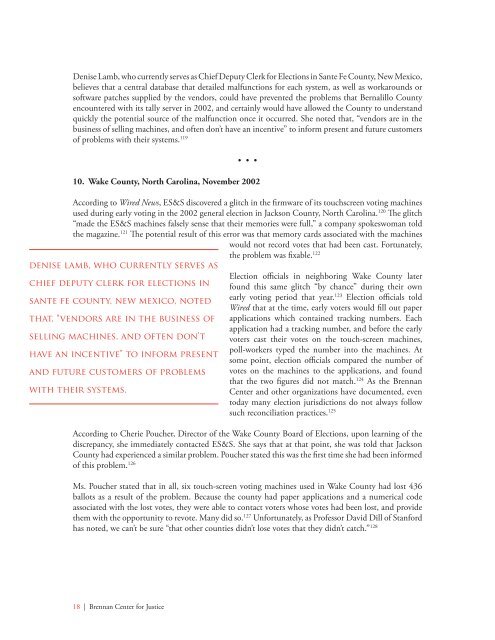
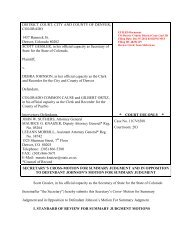
![Download the Letter [PDF] - Brennan Center for Justice](https://img.yumpu.com/50139248/1/190x245/download-the-letter-pdf-brennan-center-for-justice.jpg?quality=85)
